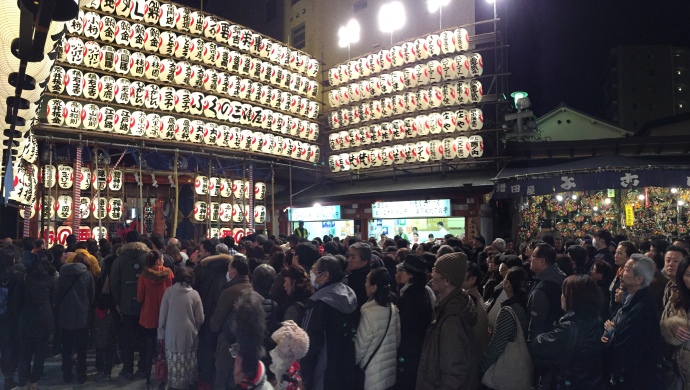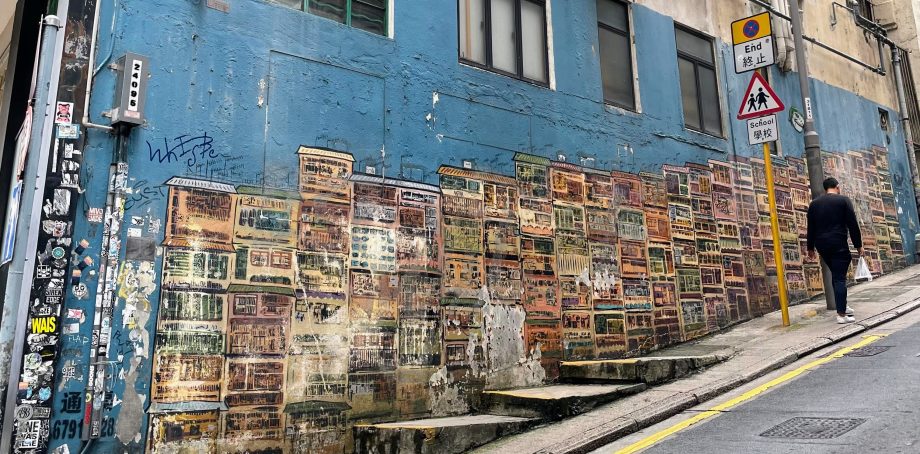 After our sumptuous lunch at the Farmer’s Market, we took a train to Asakusa and visited the 浅草文化観光センター Asakusa Culture Tourist Information Center observation deck first.
After our sumptuous lunch at the Farmer’s Market, we took a train to Asakusa and visited the 浅草文化観光センター Asakusa Culture Tourist Information Center observation deck first.
 This was a new building and it wasn’t there when we last visited Tokyo individually (but then it was really really long ago that both hubby and I visited Tokyo individually). 🙂
This was a new building and it wasn’t there when we last visited Tokyo individually (but then it was really really long ago that both hubby and I visited Tokyo individually). 🙂
From here we could get a bird’s eye view of the 仲見世通り Nakamise Shopping Street which is a lead-up to 浅草寺 Senso-ji Temple.
Asakusa is a nice area to visit, with an impressive 雷門 Kaminarimon Gate leading to a street of cute, traditional Japanese fares and wares, right up to an equally impressive 浅草寺 Senso-ji Temple which is the oldest temple in Tokyo and one of its most significant.

 We strolled along the shopping street and had the signature あげ饅頭 Agemanju (deep-fried bun that hubby cannot forget from his previous trips) and 人形焼き Ningyo-yaki (pastry with red-bean filling). Hubby commented that the traditional stall managed by an old couple was no longer there and that there are now a plentiful of flavours for the bun…
We strolled along the shopping street and had the signature あげ饅頭 Agemanju (deep-fried bun that hubby cannot forget from his previous trips) and 人形焼き Ningyo-yaki (pastry with red-bean filling). Hubby commented that the traditional stall managed by an old couple was no longer there and that there are now a plentiful of flavours for the bun…
There were so much to see but the sky was turning dark (it gets dark by 4:30pm during this season) and we hurried to the temple because it closes at 5pm. We managed to get some good-luck smoke at Senso-ji Temple and continued to strolled along the temple grounds.
Today also happened to be the 酉の市 Tori-no-Ichi Day which is a fair held on the days of the rooster in November at various Otori-jinja shrines found in all parts of Japan. In Tokyo it is most celebrated in 長国寺 Chokoku-ji in Taito-ku, quite close to Asakusa, and the most famous shrine for the Tori-no-Ichi fair. And this November there were 3 days of the rooster, quite rare and lucky for us that today was one of them for us to enjoy the festivities, open-air market and of course the street food!
There were many 屋台 yatai or street food leading to 長国寺 Chokoku-ji. We tried some Motsu-nabe, Oden, Cream Cheese Pastry, and Okonomiyaki.
We also witness the massive crowds queuing to pray at the shrine and the selling of kumade rakes or good-luck rakes made of bamboo and decorated with masks and koban (old gold coins), for ‘raking in wealth and good fortune.’ Whenever a rake is sold, it is common practice for the seller and buyer to clap their hands rhythmically in harmony with one another (known as tejime).

It was a beautiful experience soaking up the traditional Japanese atmosphere!
Contact:
|




Pingback: Japan 2015 Itinerary | Eat.Eat.Walk.Walk . 吃吃走走